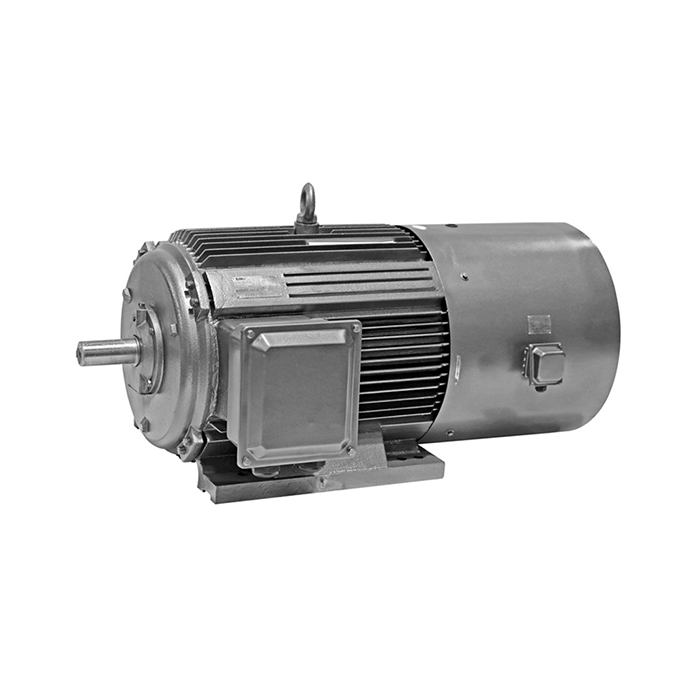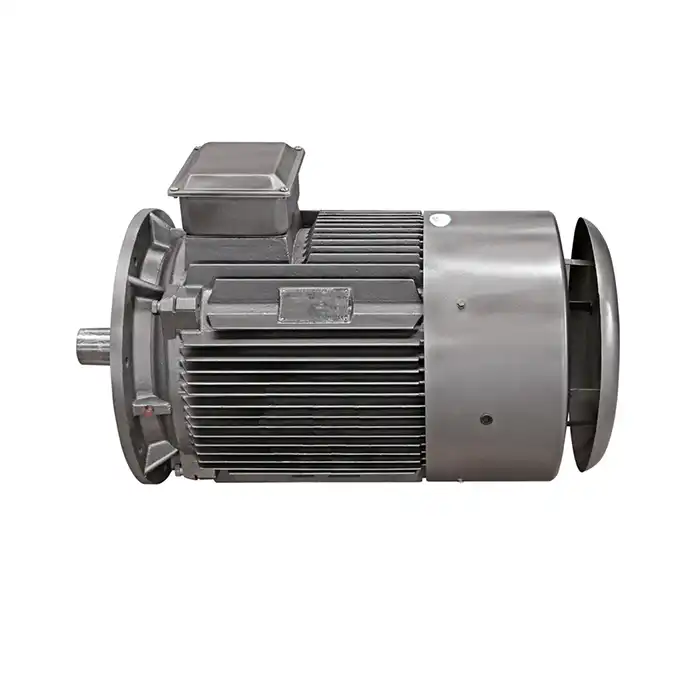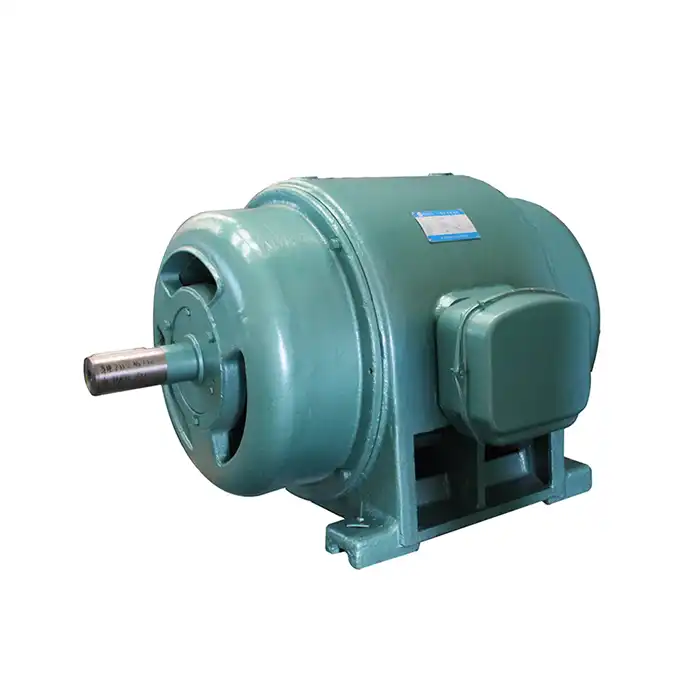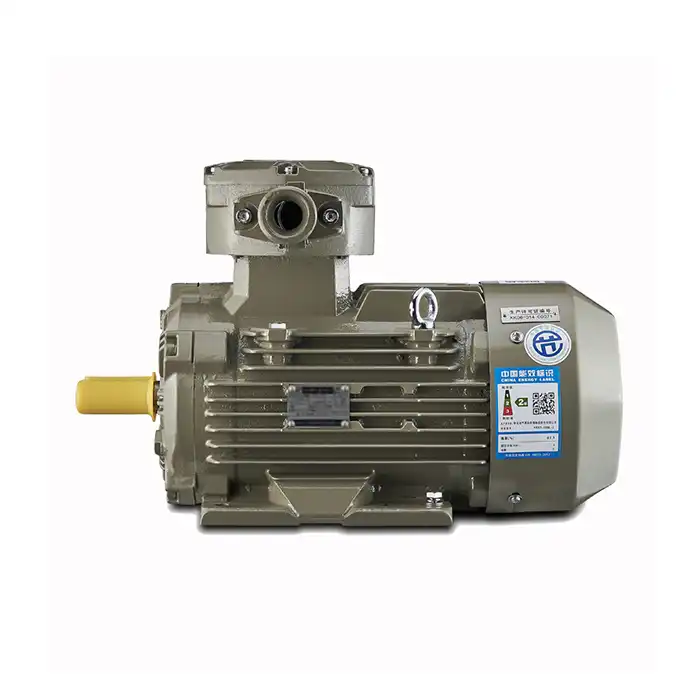Impact of cycling on motor components
A large number of start and stop cycles can have a significant impact on a variety of components within IEC LV motors. It is of utmost importance to maintain the performance and longevity of motors in order to comprehend the consequences that these have.
Thermal stress on windings
The overheating of the motor windings that occurs as a result of cycling frequently is among the most significant worries associated with this practice. Motors draw higher currents during startup, which results in the generation of additional heat. If not managed with suitable cooling or protective systems, repeated start/stop cycles can cause accelerated insulation degradation, which can lead to possible failures or short circuits.
Mechanical wear on bearings
The constant changes in rotational speed that are caused by frequent cycling place a significant amount of stress on the bearings. In the long run, this may result in increased wear and tear, greater friction, and a possible failure of the bearing before its expected lifespan. This could lead to expensive repairs and downtime that was not planned if it is not dealt with.
Rotor bar stress
In iec low voltage induction motors, the rotor bars are subject to thermal expansion and contraction during start/stop cycles. This stress can cause fatigue, leading to cracks or even complete failure of the rotor bars in high-cycle applications. Proper design and maintenance are essential to reduce the likelihood of rotor bar damage and maintain motor efficiency.
Designing motors for high-cycle applications
Manufacturers have designed specific features for iec low voltage induction motors that are intended for high-cycle use in order to address the challenges posed by frequent start/stop cycles.
Enhanced insulation systems
Motors designed for high-cycle applications often utilize advanced insulation materials and techniques. These systems are specifically engineered to resist the thermal stresses caused by frequent startups, reducing the risk of insulation breakdown and extending motor life.
Reinforced rotor construction
Motors that are classified as "high-cycle" place particular importance on the design of the rotor. The negative effects of thermal cycling can be mitigated with the use of reinforced rotor bars and end rings. Consistent rotor performance is ensured by means of these improvements, which lower the probability of failures related to fatigue.
Optimized cooling systems
Effective cooling is critical in high-cycle applications. Motors in these environments are equipped with optimized cooling systems, including improved fan configurations and additional cooling channels. These features help maintain lower temperatures, preventing overheating and ensuring efficient operation.
Robust bearing selection
To cope with the mechanical stresses of frequent cycling, high-quality bearings with improved lubrication systems are often incorporated into the motor design. These bearings offer better resistance to wear and tear, ensuring smooth operation and reducing the likelihood of premature bearing failure.
Strategies to mitigate start/stop cycle stress
While proper motor design is essential, there are additional strategies that can be employed to minimize the impact of frequent cycling on iec low voltage induction motors.
Soft starting techniques
Using soft starters or variable frequency drives (VFDs) can significantly reduce electrical and mechanical stresses during motor startup. These devices gradually ramp up the motor speed, avoiding sudden surges in current and minimizing the stress placed on motor components.
Proper motor sizing
It is critical to choose a motor that is the appropriate size for the application in question. During frequent starts, oversized motors can experience excessive heating, and undersized motors may be unable to meet the load requirements. When properly sized, a motor is guaranteed to last a long time and function at its highest level.
Regular maintenance and monitoring
It is possible to identify problems early on, before they result in motor failure, through the implementation of a comprehensive maintenance program that includes routine inspections, lubrication, and condition monitoring. This forward-thinking method has the potential to substantially increase the lifespan of motors and guarantee dependable performance in environments that are characterized by high cycle counts.
Cooling system optimization
Maintaining the motor's cooling system and ensuring that it is properly ventilated can help to maintain the ideal operating temperatures. In order to avoid overheating during cycles, this may entail making adjustments to the surrounding environment or incorporating cooling mechanisms such as additional fans or heat exchangers.
Load management
During start/stop cycles, managing the load can help to reduce stress on the motor. When they are first started up, techniques such as staged starting or load shedding can help reduce the electrical and mechanical effects on the motor, which can result in smoother operation and reduced wear and tear on components.
Conclusion
IEC LV motors can handle a lot of start-stop cycles as long as they are designed and managed correctly. The key is to choose motors that are specifically designed for high-cycle uses and use the right strategies to reduce the stresses that come with them. Industries can make sure that their LV induction motors work reliably and efficiently in demanding cyclic applications by focusing on things like better insulation, stronger construction, and better cooling, as well as the right size and regular maintenance.
Choose XCMOTOR for Your High-Cycle IEC LV Motor Needs
XCMOTOR is one of the best companies that makes iec low voltage induction motors that work well and are reliable in high-cycle situations. Our motors are built with advanced features that allow them to keep working well even after many starts and stops. Because we know a lot about power equipment solutions, we can give our customers stable power options that use little energy and meet their needs. For more information on our high-quality iec low voltage induction motor manufacturer offerings, please contact us at xcmotors@163.com. Trust XCMOTOR to deliver the durability and efficiency your industrial applications demand.
References
1. Smith, J. (2022). "Performance Analysis of IEC Low Voltage Motors in High-Cycle Applications." Journal of Industrial Electrical Engineering, 45(3), 278-292.
2. Johnson, L. et al. (2021). "Thermal Management Strategies for Frequently Cycled LV Induction Motors." IEEE Transactions on Industrial Electronics, 68(9), 8765-8779.
3. Brown, R. (2023). "Advancements in Insulation Systems for High-Cycle IEC Motors." Electric Motor Technology, 17(2), 112-125.
4. Zhang, Y. and Lee, K. (2022). "Rotor Design Optimization for Cyclic Stress Mitigation in LV Induction Motors." International Journal of Electrical Machines and Drives, 10(4), 401-415.
5. Anderson, M. (2021). "Bearing Selection and Lubrication Strategies for Frequently Started Motors." Tribology International, 156, 106-118.
6. Garcia, P. et al. (2023). "Soft Starting Techniques and Their Impact on Motor Longevity in High-Cycle Applications." IEEE Industry Applications Magazine, 29(3), 45-53.












